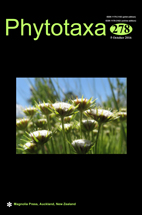Abstract
In the Northwestern Gulf of Mexico (NWGMx), subtidal rhodolith beds offshore Louisiana at 45–80 m depth harbor a diverse community of uncharacterized non-geniculate coralline algae including both biogenic and autogenic rhodoliths and other encrusting taxa. Identifying specimens to their correct genus and species is an ongoing process because many available names remain to be validated by comparison to type specimens. Here, comparative DNA sequencing (psbA, UPA, and COI) and scanning electron microscopy (SEM) are used to assess the molecular and morphological diversity of the rhodolith-forming specimens belonging to the generic concept of Lithothamnion. Phylogenetic and species delimitation analyses of the newly generated sequences from recently dredged specimens at Ewing and Sackett Banks offshore Louisiana reveal the presence of at least six species of Lithothamnion, whose generic placement is confirmed by SEM images of features considered characteristic for the genus. More broadly, our analyses indicate at least eight Lithothamnion species are found in the Gulf of Mexico. Phylogenetic analyses of single (psbA and COI) and concatenated markers (psbA, COI and UPA) show that Lithothamnion is polyphyletic.

